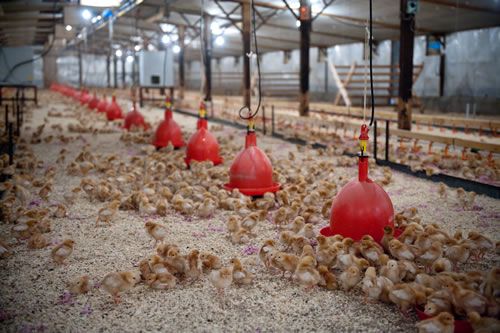
Chick placing figures have fallen back again, according to the most up-to-date statistics released by Defra.
The figures show that 2.9 million commercial layer chicks were placed in July – a fall of 12 per cent compared with the 3.3 million chicks placed in the same month last year.
The statistics will come as a relief for egg producers following a significant rise in the placing figures for June. The June placings showed an increase of seven per cent compared with the same month last year – up to three million from 2.8 million.
The June figures were a blow following a more encouraging trend earlier in the year. In February there was a five per cent fall in chick placings compared with February 2010. March brought a 27 per cent year-on-year fall and in April placings were down by 24 per cent compared with the same month in the previous year.
However, placings started to edge up again in May. The number of chicks placed in that month was up by four per cent compared with May 2010. The increase in June took the 12-month moving total to 33.5 million. July’s decrease has reduced the moving total to 33.1 million. Leading figures in the industry say that bird numbers need to fall to about 31 million.
Recent statistics for layer eggs set are encouraging. The figure for July was down 13 per cent from 8.8 million last year to 7.7 million this year. The number of layer eggs set in June this year was 7.5 million – which was 12 per cent fewer than the 8.6 million set in June 2010. There were a series of falls earlier in the year – 28 per cent in February, 11 per cent in March, and 12 per cent in April, but a large increase in the number of layer eggs set in May this year. A total of 9.2 million were set that month, compared with 7.6 million in May 2010. The May 2011 figure was up 22 per cent on the same month last year. The 12-month moving total for June was 94.5 million.
The latest egg packing figures released by Defra show that free range eggs continue to take an increasing share of the market in the United Kingdom. Free range eggs accounted for 45 per cent of all eggs passing through UK packing stations in the second quarter of 2011. Cage eggs accounted for 48 per cent of the total, with organic and barn eggs combined sharing 7.5 per cent of the overall throughput.
The total number of free range eggs in the second quarter of this year was 3,054,000 cases, compared with 2,779,000 in the second quarter of 2010. Cage egg numbers fell to 3,305,000 cases in the second quarter of 2011 from 3,348,000 in the same period last year. Barn eggs fell from 324,000 cases to 277,000, but organic numbers increased slightly from 235,000 cases to 243,000.
The total number of eggs passing through UK packing stations in the second quarter of this year was 6,879,000 cases, compared with 6,686,000 in the second quarter of 2010. This was a year-on-year increase of 2.9 per cent, and it followed a year-on-year increase of 5.5 per cent for the first quarter of the year.
UK packing station throughput by country shows that a total of 5,248,000 cases of eggs were packed in England and Wales during the second quarter of this year compared with 4,889,000 in the second quarter of 2010. In Scotland the number of eggs packed fell from 1,130,000 cases in the second quarter of last year to 958,000 this time. Northern Ireland was up slightly, from 667,000 cases in the second quarter of last year to
673,000 this time.
Whilst overall egg numbers have been increasing the Defra figures confirm the depressed state of the market for egg producers. The average packer to producer price for all eggs for the second quarter of 2011 was 69.1 pence per dozen – a fall of 0.8 per cent compared with the same period last year. This has come during a period when egg producers have seen their costs increasing significantly – particularly feed costs.
The percentage split of graded eggs by size shows that during second quarter of 2011 4.9 per cent of throughput was very large eggs, 42.6 per cent was large eggs, 41.5 per cent was medium eggs, and small eggs accounted for 3.5 per cent. Graded seconds accounted for 7.5 per cent of total throughput.
The number of eggs bought by UK processors during the second quarter of 2011 was 1.3 million cases. UK egg processors produced nearly 26,000 tonnes of egg products during the quarter. Liquid and frozen eggs accounted for 67 per cent of the total production.
Liquid and frozen egg amounted to 17,190 tonnes. Other egg products amounted to 8,471 tonnes. Total egg products were 25,661 tonnes – an increase of 1.6 per cent over the same period last year. This followed a 7.1 per cent year-on-year increase in the first quarter of 2011.
The latest trade data shows that during the period from January to May 2011 the UK imported 1.33 million cases of shell eggs - a fall of 42 per cent on the same period last year. Exports of shell eggs for the same period totalled 276,000 cases, which was a 10 per cent rise on the same period during 2010.
UK imports of egg products for the period from January to May 2011 stood at 1.083 million cases - a 9.6 per cent fall on the same period last year. Exports of egg products for the period totalled 60,000 cases, which represented a 21 per cent increase on exports during the same period of 2010.
